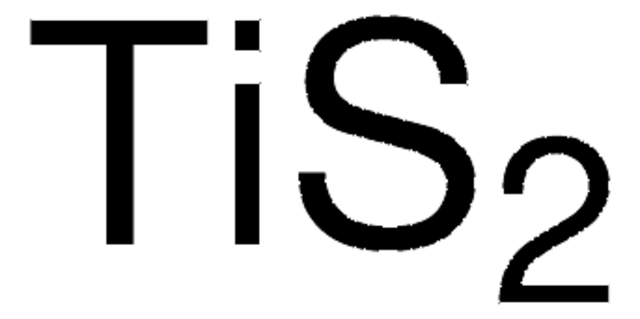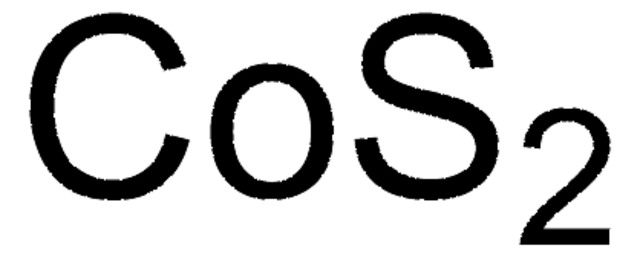808717
Titanium disulfide
Crystal, 99.995%
Synonym(s):
Titanium disulphide, Titanium sulfide
About This Item
Recommended Products
Quality Level
assay
99.995%
form
crystals
L × W × H
0.5 cm × 0.5 cm × 0.1-0.15 mm, typical size, some variation in dimensions may occur with different batches
SMILES string
S=[Ti]=S
InChI
1S/2S.Ti
InChI key
CFJRPNFOLVDFMJ-UHFFFAOYSA-N
Looking for similar products? Visit Product Comparison Guide
Application
Preparation Note
signalword
Warning
Hazard Classifications
Eye Irrit. 2 - Self-heat. 2 - Skin Irrit. 2 - STOT SE 3
target_organs
Respiratory system
Storage Class
4.2 - Pyrophoric and self-heating hazardous materials
wgk_germany
WGK 3
flash_point_f
Not applicable
flash_point_c
Not applicable
Certificates of Analysis (COA)
Search for Certificates of Analysis (COA) by entering the products Lot/Batch Number. Lot and Batch Numbers can be found on a product’s label following the words ‘Lot’ or ‘Batch’.
Already Own This Product?
Find documentation for the products that you have recently purchased in the Document Library.
Customers Also Viewed
Articles
Professor Ebrahimi and Professor Robinson (Pennsylvania State University, USA) summarize recent advances in the synthesis of these 2D materials, resulting material properties, and related applications in biosensing of neurotransmitters, metabolites, proteins, nucleic acids, bacterial cells, and heavy metals.
Advances in scalable synthesis and processing of two-dimensional materials
For several decades, the need for an environmentally sustainable and commercially viable source of energy has driven extensive research aimed at achieving high efficiency power generation systems that can be manufactured at low cost.
Our team of scientists has experience in all areas of research including Life Science, Material Science, Chemical Synthesis, Chromatography, Analytical and many others.
Contact Technical Service







